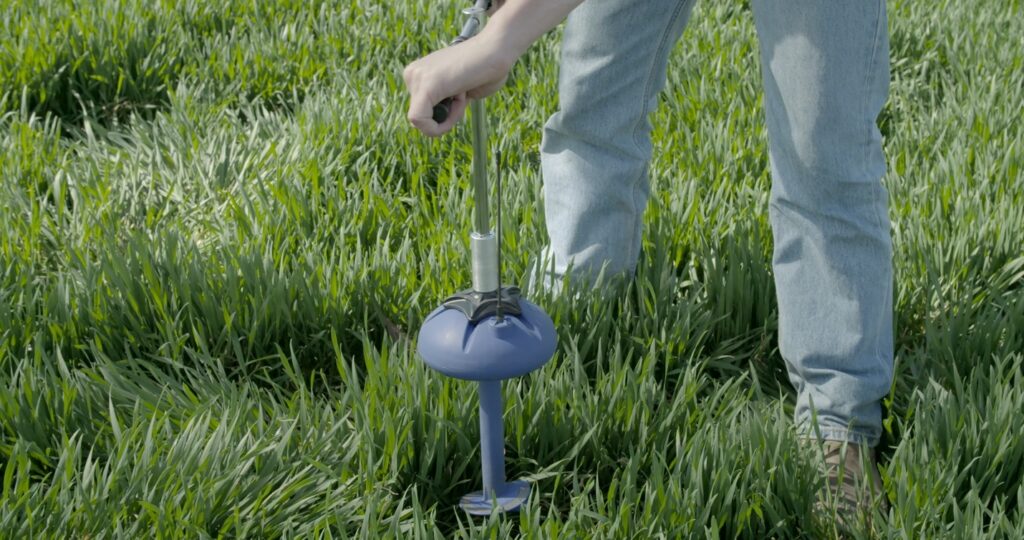NASA Harvest, NASA’s Food Security and Agriculture Program, and CropX, the Israeli agtech analytics company, have formed a strategic partnership to “give NASA Harvest unprecedented soil insights for its global agricultural monitoring efforts,” the companies announced on Thursday.
NASA Harvest and CropX will provide farmers and industry experts with the data and information they need to improve farming sustainability by conserving resources and improving crop yields.
Founded in 2013, CropX is an agtech analytics company developing cloud-based software solutions integrated with wireless sensors for better crop yield and agricultural output. The company has marketed its platform in Mexico, New Zealand, United Arab Emirates, and the United States.
The partnership with CropX will help further NASA Harvest’s mission to improve food security and advance sustainable agriculture, supporting farmer productivity while preserving natural resources in the US and worldwide through the use of satellite data.
NASA aims to deliver critical insights to governments and farmers around the world in support of informed and science-driven decision-making, by combining the power of CropX soil data monitoring and comprehensive insights provided by the Israeli platform.
“Soil health and nutrient management is at the very root of food security and sustainable agriculture concerns – an accurate understanding of what is actually happening underneath the ground is essential,” said Nadav Liebermann, CTO of CropX. “Satellite imagery has long been an integral part of CropX algorithms, and our partnership with NASA Harvest will deliver valuable agronomic insights by connecting critical data at different depths underground and from an expansive network of satellites in space. We are looking forward to working with the NASA Harvest team to improve farming decision-making worldwide – in both developed and undeveloped regions.”
NASA has deployed CropX solutions across a group of alfalfa farms in Arizona controlled by IAF Investments Group to test and finetune the algorithms that will become the foundation of nationwide, and eventually global, agriculture insights. Over a 12-month time period with the integration of NASA satellite data and synthetic aperture radar (SAR) information, the pilot program will quickly establish the parameters for water usage estimates, yield prediction, soil quality and land usage assessments based on multiple crop growing cycles.
“We are in a constant race to produce and supply enough food in order to feed a rapidly growing global population, with finite land and natural resources. NASA Harvest is dedicated to collaborating with top innovators to make the best possible use of our agricultural land; CropX unites our space-led vision with on-farm intelligence and results,” said Dr. Inbal Becker-Reshef, program director of NASA Harvest. “We were impressed by the accuracy and reliability with which the CropX soil monitoring platform was able to both pinpoint various soil health and environmental challenges, as well as determine opportunities for water, energy and nutrient conservation.
First introduced via Farm2050, an ecosystem of agrifood industry leaders led by Innovation Endeavors and Finistere Ventures, the new partnership between CropX and NASA Harvest puts collaboration across the public, private and academic sectors into practice. A multidisciplinary consortium led by the University of Maryland, NASA Harvest is dedicated to creating the partnerships needed to unlock innovation in agriculture. Together, NASA Harvest and CropX plan to quickly scale the program based on learnings from the initial pilot.
“CropX offers the advanced tools and global farm footprint needed to understand and improve soil health and water quality tied to farming ecosystems around the world. Paired with satellite data, this provides the opportunity to scale these insights in support of farmer productivity and more effective use of available resources,” added Dr. Becker-Reshef.
Related posts

Israeli AI Safety Tool Among TIME’S Best Inventions For 2024

TAU Team Discovers Mechanism To Eliminate Cancerous Tumors

Ashdod Port Investing In Startups As Part Of Innovation Strategy




Facebook comments